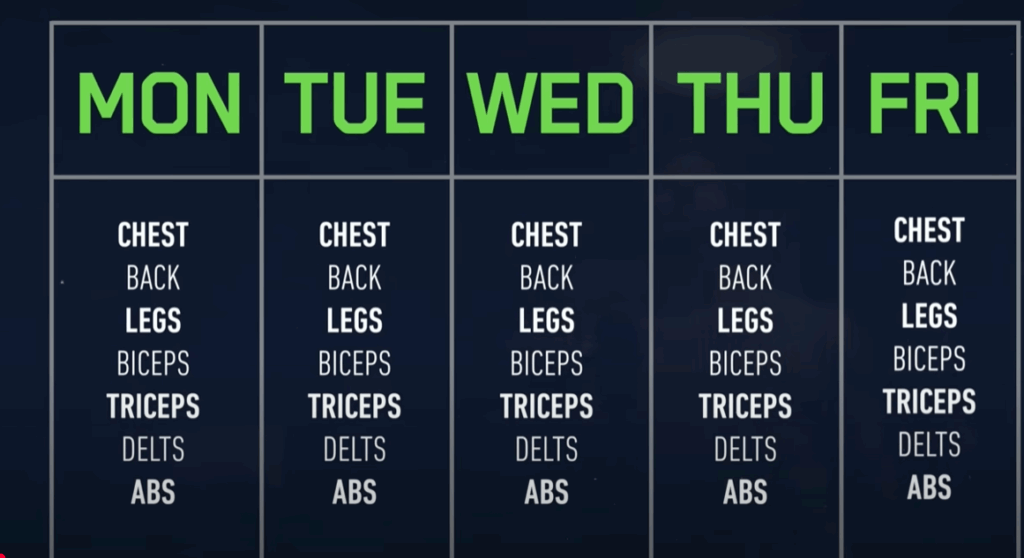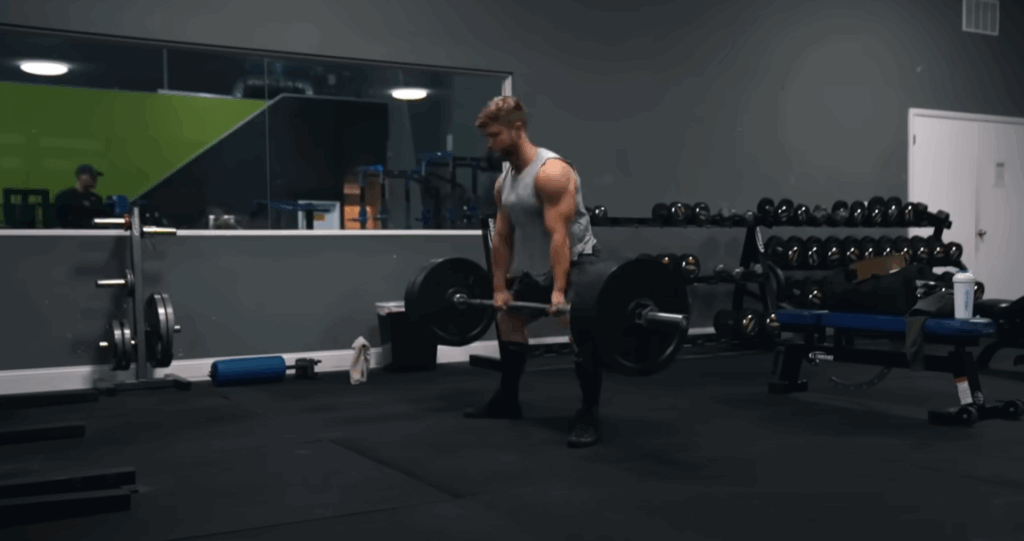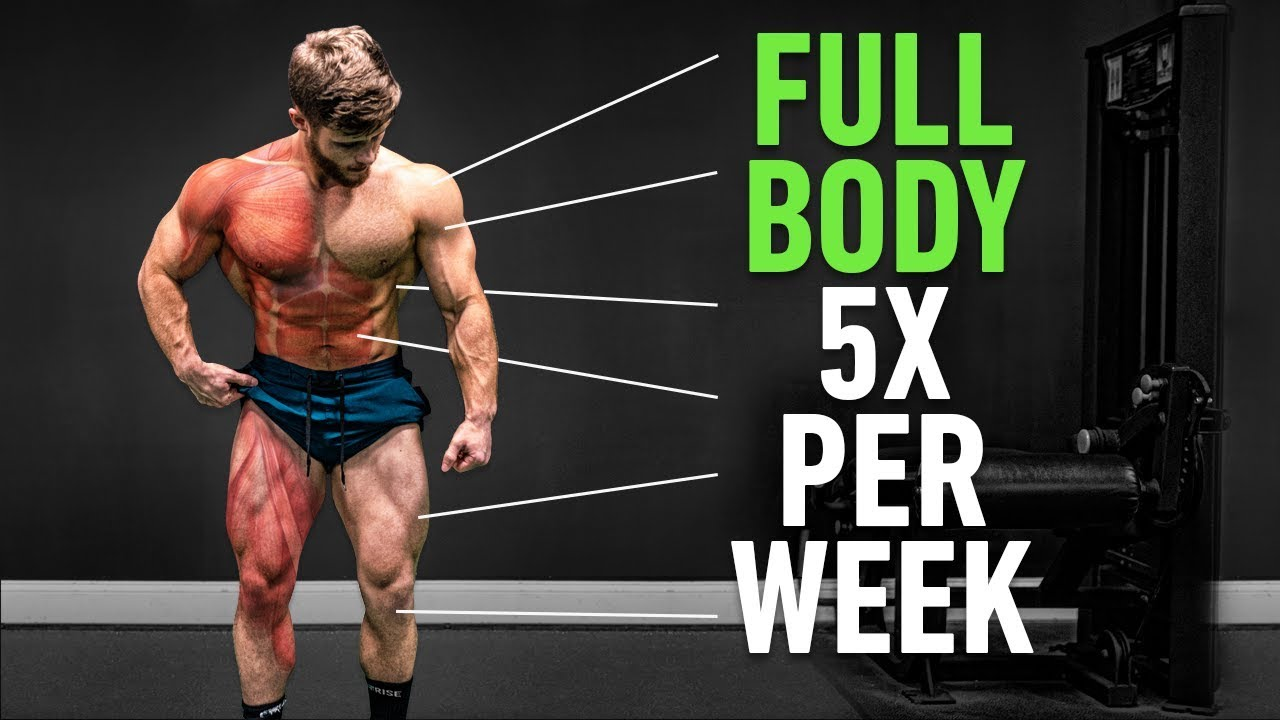Is Training Full-Body 5 Days a Week the Smartest Approach for Muscle Growth?
When most people think of full-body workouts, they usually imagine beginner routines performed two or three times per week. Advanced lifters often dismiss this style as inefficient or too fatiguing for serious gains. But what if training your entire body five times per week was actually more effective for hypertrophy?
For the past six months, I’ve been experimenting with a high-frequency full-body split—working every major muscle group five days per week. At first glance, it sounds like a recipe for overtraining. But in reality, this method has offered some surprising benefits—better recovery, improved exercise quality, and consistent muscle growth.
Let’s break down the science, logic, and real-world experience behind high-frequency full-body training and why it might be worth trying, especially for intermediate to advanced lifters.

Why Traditional Splits May Be Holding You Back
Conventional bodybuilding wisdom often follows the “bro-split” philosophy: hammer a muscle group with high volume once a week, then give it six days to recover. While this certainly can work, it may not be the most efficient method for growth—especially for experienced lifters.
More modern research supports the idea of training each muscle group multiple times per week. Push/pull/legs or upper/lower splits help increase weekly training frequency, which is closely linked to better strength and hypertrophy gains—provided volume and intensity are managed intelligently.
So, what if we took it a step further and trained everything—legs, back, chest, shoulders, arms—nearly every day?
The Science of Muscle Protein Synthesis and Frequency
Here’s what we know: when you train a muscle, you stimulate muscle protein synthesis (MPS), the biological process that repairs and grows muscle tissue. In beginners, MPS can stay elevated for up to 48 hours post-workout. But for advanced lifters, that window may shrink to as little as 12 hours.
This means if you’re only training a muscle once per week, you’re only taking advantage of that growth window once. In contrast, higher frequency training allows you to “spike” MPS more often throughout the week, potentially leading to greater long-term muscle gains.
But does this translate into real results?
What the Research Shows (And What It Doesn’t)
One of the most discussed (and mysterious) studies on training frequency is the Norwegian Frequency Project. This unpublished study compared full-body training three days per week versus six days per week, with total volume equated. The high-frequency group reportedly gained twice the strength and muscle mass over 15 weeks.
Although the full data was never formally published, the study gained traction in strength training circles due to its design and promising outcomes. A follow-up study attempted to replicate these results in intermediate trainees over six weeks but found no significant differences. However, the shorter duration and lower training experience may explain the lack of effect.
If nothing else, this suggests that more frequent training might offer greater benefits for advanced lifters who can recover quickly and need higher training stimulus to keep progressing.

The Real-World Benefit: Higher-Quality Training Volume
Here’s a practical reason high-frequency training works so well: it allows you to distribute your weekly volume more evenly across multiple sessions.
Let’s say you’re aiming for 15 sets per week for your chest. You could do all 15 sets in one session (hello, fatigue and diminishing returns), or you could do three high-quality sets over five sessions. By spreading volume out, you reduce local fatigue, improve technique, and get more from each rep.
Recent data even suggests that there’s a per-session volume “ceiling.” After roughly 5–10 sets per muscle in a single workout, the effectiveness of each additional set may drop off significantly. This “junk volume” can waste time and impede recovery.
What About Fatigue and Recovery?
The biggest concern most lifters have about training full-body five days a week is recovery. “Won’t I burn out or overtrain?” Not if you program correctly.
Each session in a high-frequency full-body plan should only include 1–2 exercises per muscle group. For example, you might only do leg press and calf raises for lower body on one day, then hit RDLs and lunges on another. By keeping per-session volume low, you recover faster and perform better—often with minimal soreness after the first two weeks.
In fact, this setup takes advantage of something called the repeated bout effect—your body becomes more efficient at recovering from similar stimuli the more often it experiences them. Within a couple of weeks, you’ll likely find you can train muscles almost daily without significant soreness or dips in performance.
Performance and Focus Go Up
Another hidden advantage: better focus. On a traditional leg day, by the time you get to your third or fourth quad or hamstring movement, fatigue sets in and form breaks down. But with this split, since you’re only doing one major leg movement per day, you’re fresh, focused, and more likely to execute with precision.
That consistent, high-quality execution adds up to better progress—especially for complex lifts like squats, presses, and rows.
Tips for Success with High-Frequency Full-Body Training
If you’re interested in giving this approach a shot, here are a few guidelines to keep in mind:
- Keep intensity in check early on: Aim for 1–3 reps shy of failure (RPE 7–8) for the first 2–3 weeks.
- Limit daily sets per muscle: Stay in the 3–6 set range per muscle group each session.
- Warm up thoroughly: Since you’ll be training some muscles multiple days in a row, proper warm-ups are non-negotiable.
- Prioritize compound lifts: Use heavy hitters like squats, presses, rows, and RDLs to drive adaptation with fewer total exercises.
- Listen to your body: Watch for fatigue, and adjust intensity or volume as needed.

Is Full-Body 5x Per Week Right for You?
This style of training isn’t necessarily “better” in all contexts—but for lifters with solid technique, recovery habits, and training experience, it can be incredibly effective.
If you’re stuck on a plateau with your current split, or just want a new way to stimulate growth, a full-body high-frequency routine might be exactly what you need.
Not only can it help you train smarter, but it can also help you avoid the burnout and boredom that comes from crushing the same muscles once a week with diminishing returns.



